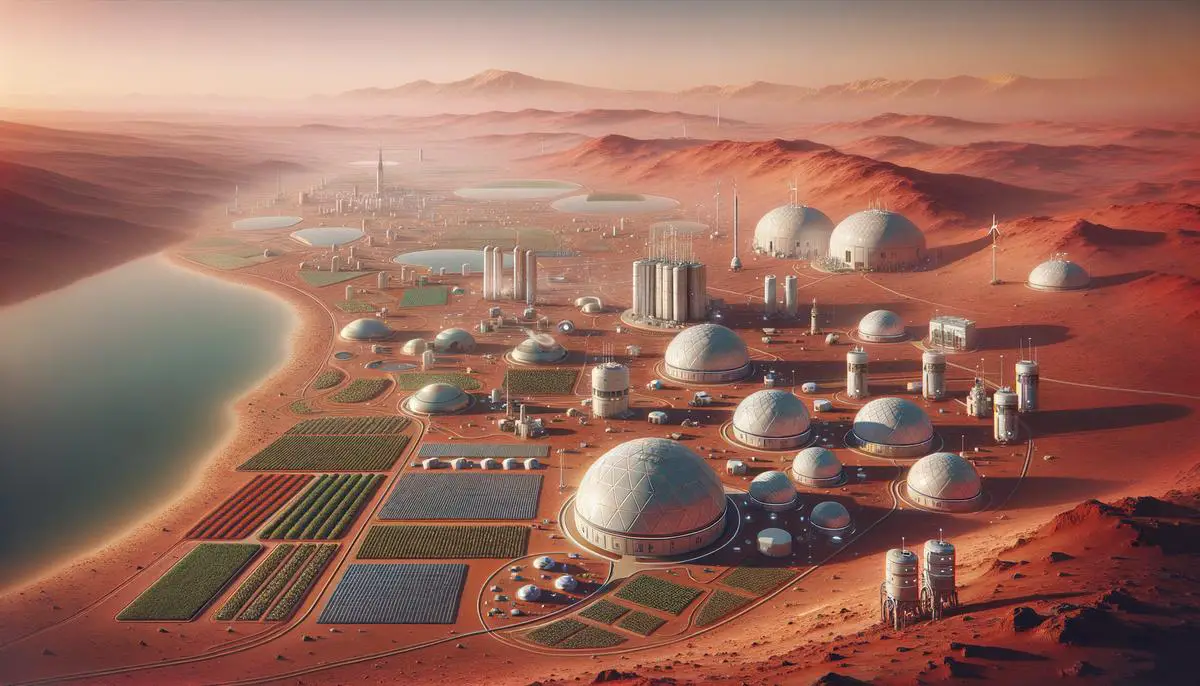As humanity sets its sights on Mars, addressing the challenges of water extraction, energy production, agriculture, construction, and communication becomes paramount. Each of these areas presents unique hurdles that require innovative solutions to support sustained human presence on the Red Planet.
Water Extraction and Utilization
Mars presents unique challenges for water extraction, crucial for sustaining human life. Water exists mainly as ice beneath the surface, requiring specialized technologies for extraction. NASA and private firms like SpaceX are developing methods to extract water from soil and ice.
Excavation technologies are being designed to handle extreme Martian conditions. Drills and thermal systems aim to penetrate the soil and heat it, releasing trapped water vapor. NASA's inflatable heat shields, which become rigid after inflation, could potentially assist in enclosing habitable environments and extracting water after landing.
Nuclear propulsion systems may enable extensive travel across Martian terrain to locate scattered water sources. NASA is developing nuclear thermal and nuclear electric propulsion for deep space missions, which could also power water extraction machinery.
Laser communications are progressing to enable rapid sharing of data between Mars and Earth, aiding in remotely guiding water extraction operations.
The Agnostic Life Finding (ALF) system is being designed to detect life within Martian water samples by isolating genetic polymers, potentially identifying biological markers indicative of life.
Multiple Roles of Water on Mars:
- Drinking
- Agriculture
- Fuel production
Technologies are being developed to convert Martian soil's carbon dioxide and water into oxygen and methane. Electrolysis units could split water into hydrogen and oxygen, providing breathable air and rocket propellant.
Scientists are also exploring potential subsurface lakes and glaciers that could harbor microbial life.1
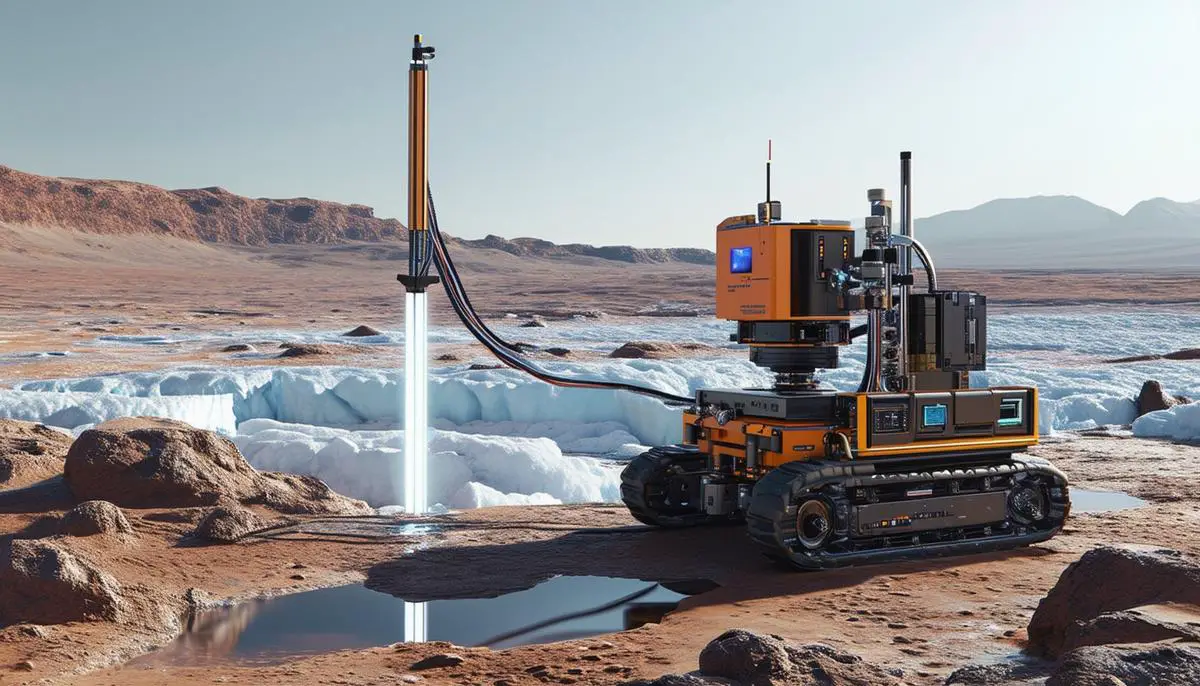
Energy Production and Storage
Energy production and storage are crucial for sustaining operations on Mars. Solar power is a top candidate, despite challenges posed by dust storms and greater distance from the Sun. Advancements in photovoltaic systems and solar panel designs aim to maximize energy capture, including self-cleaning mechanisms and high-efficiency cells.
Nuclear fission offers a reliable energy solution. NASA's Kilopower project focuses on small nuclear reactors designed to provide steady output over extended periods, supporting habitats, resource extraction, and life support systems.
Geothermal energy presents a potential option, given Mars' volcanic history. Advanced geophysical surveys and drilling techniques specific to the Martian crust would be needed to tap into this resource.
Energy Storage Solutions:
- Lithium-ion batteries adapted for Martian applications
- Solid-state batteries with higher energy densities
- Hydrogen fuel cells utilizing local ice resources
Sophisticated energy management systems can balance input from various sources, optimizing overall energy use. Closed-loop systems that reuse waste energy and materials can enhance overall efficiency, such as using excess heat from nuclear reactors to support hydroponics or maintain stable temperatures in habitation modules.2
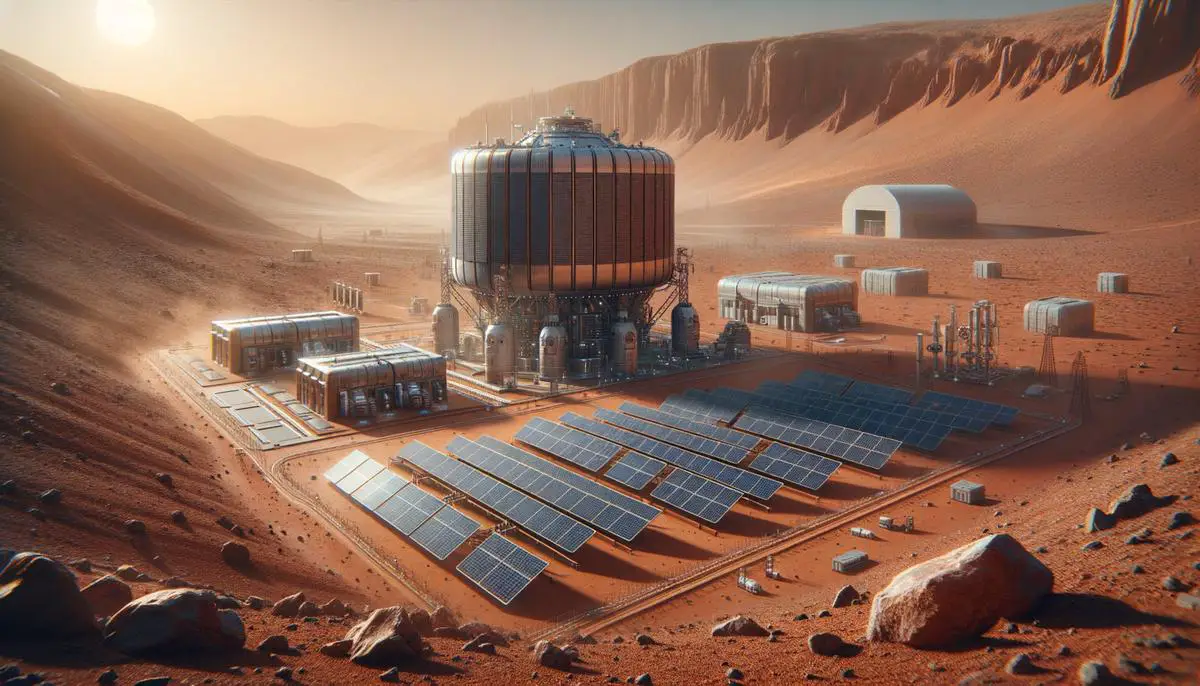
Agriculture and Food Production
Agriculture on Mars requires innovative solutions to overcome limited arable land and harsh climate conditions. Alternative methods such as hydroponics and genetic engineering are being explored.
Martian soil presents toxicity challenges due to high iron oxide content. Researchers are developing soil treatment methods, including washing to remove toxic perchlorates and introducing Earth-based beneficial microbes.
"Hydroponics emerges as a favorable alternative, allowing precise control over nutrient delivery and protecting crops from Martian surface conditions."
Vertical farming and LED grow lights enhance productivity and space efficiency.
Genetic engineering is being used to develop crops that can withstand suboptimal Martian conditions, including enhanced radiation resistance and improved growth rates in low-light environments.
Advanced Agricultural Systems:
- Aquaponics: Combines fish farming with hydroponics
- Aeroponics: Further reduces dependency on Martian soil
- Energy-efficient LED grow lights customized for optimal photosynthetic response
- Automation and AI technologies for precise growth management
Improved storage and preservation methods, such as freeze-drying and vacuum sealing, can extend food shelf life and reduce waste.3

Construction and Habitat Development
Sustainable habitats are crucial for long-term human presence on Mars. Martian soil, rich in iron oxide and silicon oxide, offers potential building materials that can reduce dependence on Earth-supplied resources. These materials are vital for constructing sturdy structures capable of withstanding Mars' harsh environmental conditions.
3D printing emerges as a key technology for construction on Mars due to its flexibility and efficiency in utilizing local resources. "Regolith-based 3D printing" allows the construction of habitat structures layer by layer, directly on site. This technique reduces logistical costs and accelerates building timelines compared to traditional methods.
Autonomous 3D printers, equipped with AI, can adapt to local terrain and environmental conditions, ensuring structures are built rapidly and precisely. These systems can create not only the outer shell of habitats but also internal components like walls, furniture, and life-support systems.
Inflatable structures present another solution for habitation on Mars. These lightweight structures can be inflated to provide large, habitable spaces once deployed. They typically include multiple layers to insulate against:
- Radiation
- Extreme temperatures
- Micrometeoroid impacts
Combining 3D printing and inflatable technologies can yield hybrid habitats. For example, an inflatable module can serve as an initial shelter, which is then covered with 3D-printed regolith to enhance its durability and thermal insulation.
Beyond structural aspects, Martian habitats must consider life-support systems that ensure a stable environment. These systems encompass:
- Air and water recycling
- Temperature control
- Waste management
Bioregenerative life-support systems are being developed to create closed-loop ecosystems where plants and microbes recycle air and water.
Modular living quarters and laboratories, designed to be flexible and reconfigurable, are also part of the construction plans. These can be expanded as needed, allowing settlers to adapt their living and working spaces based on mission requirements.
Ensuring the habitability of these structures involves rigorous testing on Earth, simulating Martian conditions as closely as possible. Structures are subjected to vacuum, radiation, and temperature extremes to validate their resilience.
The collaboration between space agencies, private companies, and international partners is critical to advancing these construction technologies. By pooling resources and expertise, these entities can accelerate the development of sustainable habitats for Mars.
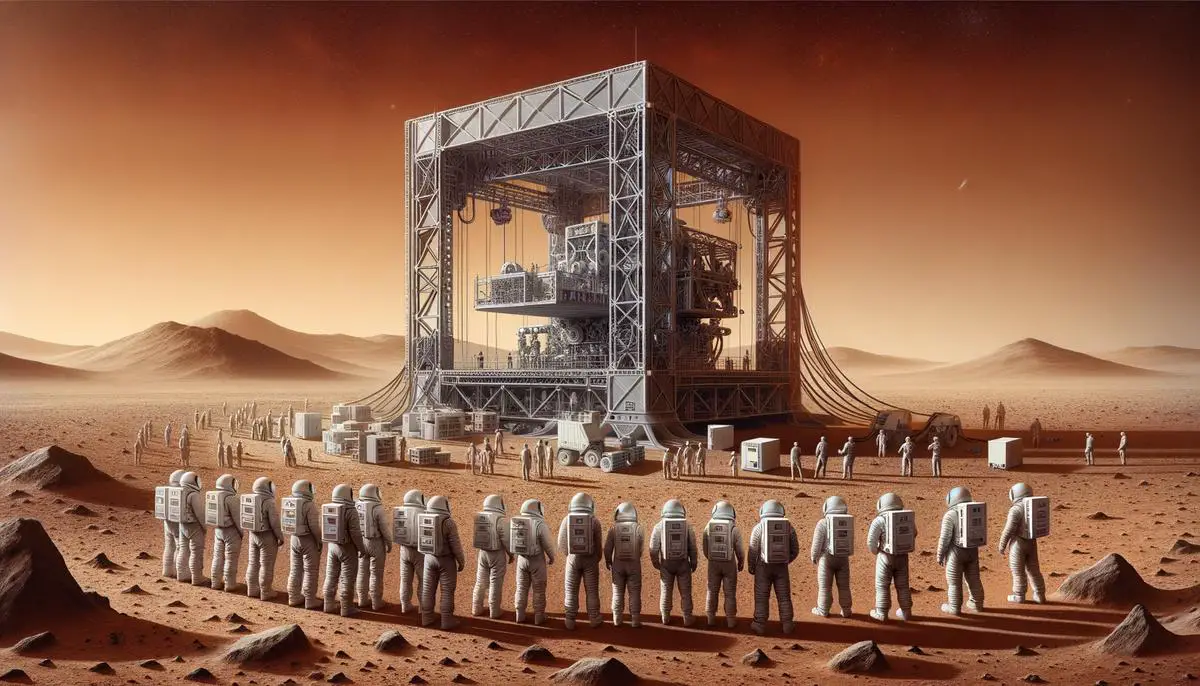
Communication Systems
Efficient and reliable communication systems are essential for Mars exploration and colonization. Laser communication systems offer several advantages over traditional radio wave-based methods, including higher data transmission rates and reduced signal dispersion over long distances.
Laser communication systems transmit data using focused beams of light, significantly increasing the amount of information sent per second compared to radio waves. This high-speed capability can enhance mission operations, providing faster insights and fostering swift decision-making.
"Laser communications could revolutionize the way we communicate with Mars, potentially increasing data rates by a factor of 10 to 100 times over current radio frequency systems."1
SpaceX's Starlink project and NASA's Deep Space Optical Communications (DSOC) technology are leveraging these advantages to improve Mars-Earth data links. However, challenges remain in establishing stable connections over the vast distances involved and dealing with atmospheric interference.
The solar conjunction period, when Mars moves behind the sun relative to Earth, poses a communication challenge. Advanced algorithms and predictive models are being developed to mitigate the impact of these blackout periods.
Precise pointing systems are crucial for laser communication, as the beam must hit a relatively small target on the receiving system. Innovations in this area include:
- Gimbaled mirrors
- Fine-steering mechanisms capable of maintaining alignment with high accuracy
Redundancy is important in these communication systems. Multiple relay satellites orbiting Mars and Earth can ensure a broader, continuous communication network, reducing the risk of data loss.
Investment in ground infrastructure on Earth is equally vital. Ground stations equipped with receivers capable of decoding high-speed laser communications need to be strategically placed to minimize atmospheric disturbances.
While laser communication systems represent a significant advancement in Mars-Earth data transmission, deploying these systems involves overcoming challenges related to distance, precision, and redundancy. Continued innovation in these technologies will ensure reliable communication for long-term Mars exploration and colonization.
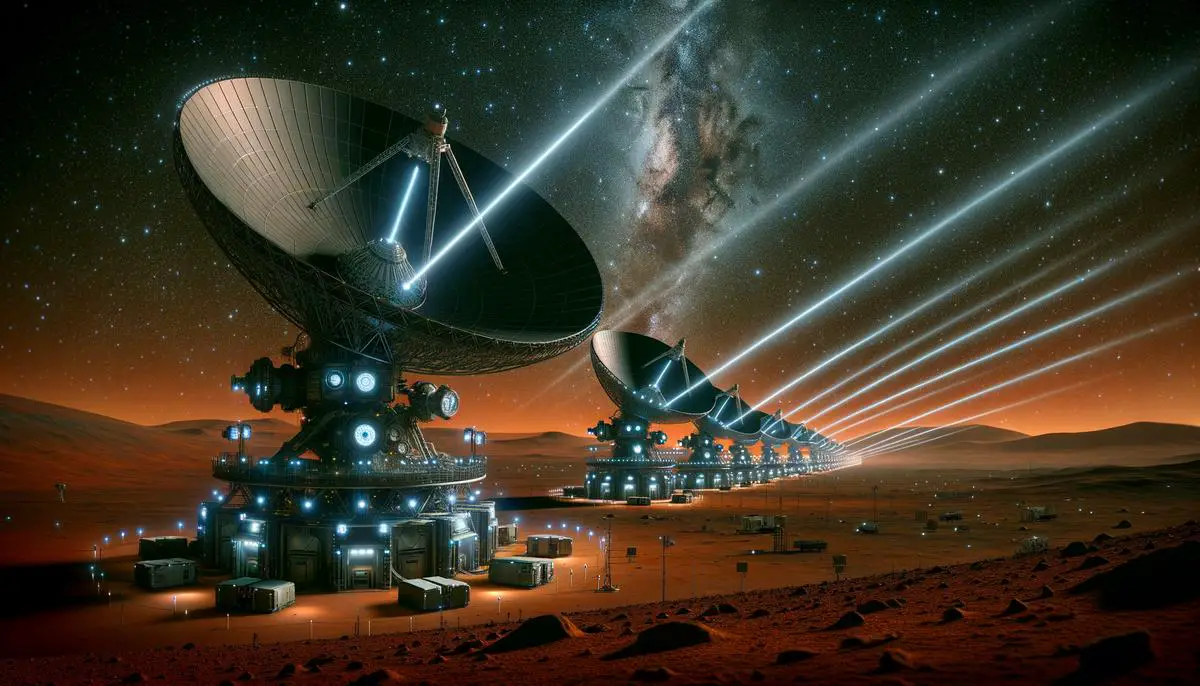
In summary, the integration of advanced technologies across water extraction, energy production, agriculture, construction, and communication forms the backbone of future Mars missions. These innovations collectively pave the way for a sustainable human presence on Mars.
![]()
